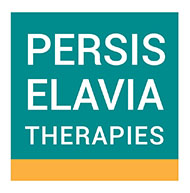Conditions and Treatment
Achilles tendonitis
Achilles tendinitis is an overuse injury of the Achilles tendon, the band of tissue that connects calf muscles at the back of the lower leg to your heel bone. This occurs mainly due to tight calf or inability for the calf muscle to release or lengthen during running and activities like squatting. Thickening and redness of tendon will follow with sharp pin point pain mainly on walking immediately after rest and loaded calf activities like sprinting and reaching up on toes.
Our approach
We off load the tendon with taping and gentle mobilization of the heel bones. Eccentric exercises for the calf muscle to lengthening when ankle is being stretched is very important to off load the tendon and heal it at a correct length.
Ankle sprain
A sprained ankle is an injury that occurs when you roll, twist or turn your ankle in an awkward way. This can stretch or tear the tough bands of tissue (ligaments) that help hold your ankle bones together.
Ligaments help stabilize joints, preventing excessive movement. A sprained ankle occurs when the ligaments are forced beyond their normal range of motion. Most sprained ankles involve injuries to the ligaments on the outer side of the ankle.
Our approach
In acute stage, we use taping methods to immobilize the joint to take load off the ligaments. Icing and anti-inflammatory drugs with help reduce swelling and pain We then progress to active movements in a pain free range, strengthening exercises of the leg muscles and finally rehabilitation is completed with introduction to proprioceptive and balance
exercises.
Ankle fracture
Broken ankles are usually caused by a rotational injury, where the ankle becomes twisted, turned or rolled while walking or running, such as during sports activity. But they can also be caused by a high-force impact, such as a fall from height or automobile collision Most ankle fractures are treated conservatively with plaster for immobilization, but a few may need surgical intervention with a wire or screw to stabilize the broken bones in place.
Our approach
Post immobilization, we work on reducing ankle stiffness by range of motion exercises , manual joint mobilization, stretching exercises and the follow with strength training to restore the normal movement. Rehabilitation is completed with introduction to proprioceptive and balance exercises.
Plantar fascitis
The plantar fascia is a thick, web like ligament that connects your heel to the toes. It covers the bottom of the foot and acts as a shock absorber and supports the arch of your foot, helping you walk correctly. This fascia can get inflamed due to over activity of the foot, improper foot alignment like flat feet or due to increased activity of the calf muscle.
Symptoms would be pain and swelling in the sole of the foot and sides of the heel. Pain would be mainly on initial walking after rest, early mornings or when the bottom of the foot is stretched in activities like stairs and heel walking.
Our approach
We treat using taping, soft tissue release and stretching exercises for decreasing pain. Icing and ice rolling are used to decrease the swelling. We also advice on appropriate footwear for biomechanical correction.
Morton’s neuroma
Morton’s neuroma is a painful condition that affects the ball of your feet, most commonly the area between your second and third toes. Morton’s neuroma involves a thickening of the tissue around one of the nerves leading to your toes. This can cause a sharp, burning pain in the ball of your foot. Your toes also may sting, burn or feel numb.
Our approach
We treat by offloading the nerves by splinting, taping, mobilization of toe joints and stretching exercises for the small intrinsic muscles of the feet. We provide appropriate footwear for biomechanical correction.
Flat feet
Is a postural deformity in which the arch is of the foot is collapsed. This makes the entire sole of the foot coming inward or dropping downward to be in contact with the ground. This is called pronation.
This deformity may be congenital, as in from birth, or can be developed due to poor knee and hip postures forcing the foot to turn inwards.
This condition can cause pain in the inside of the foot or the heel, but due to poor loading it can also very often be the cause for hip and knee pain and in some instances even be the reason for back pain.
Our approach
After a full foot examination, we provide appropriate insoles and footwear for biomechanical correction. For pain management, we diagnose the problem higher up in the chain and address the same with manual therapy and appropriate muscle toning and strengthening programs.



